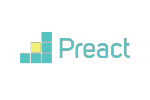 By Ujjal Kohli, CEO of Preact
By Ujjal Kohli, CEO of Preact
 I have a high level of trust in my leadership team. A big source of that trust is their ability to communicate their business performance story to me in a quantifiable way. By that I mean they do a great job every week informing me of their teams’ incremental successes and failures using clear, concise metrics.
I have a high level of trust in my leadership team. A big source of that trust is their ability to communicate their business performance story to me in a quantifiable way. By that I mean they do a great job every week informing me of their teams’ incremental successes and failures using clear, concise metrics.
I’m swimming in information but our weekly leadership meeting is the one place where everything (usually) makes sense. I’m not saying I’m always happy with the story I hear. But the ebb and flow of the metrics means fewer surprises and better decisions.
It’s clear many organizations are unsure how to quantify customer success beyond churn rate, which reflects I think the nascent state of the discipline. But I have found that when asked to provide near-term quantification of their goals and progress, our customer success team quickly hones in on what’s important.
Below is the 4-point framework we use to quantify the impact our customer success strategy is having on our business.
#1: 5 STEPS OF CUSTOMER ONBOARDING
We all know customer onboarding is critical – whether your onboarding is high-touch or automated. The important rule here is simplification and prioritization. Condense your onboarding strategy to just five important steps and make sure your customer success team is taking the time to perfect them. This will encourage them to think of onboarding as a big-picture process rather than a 30-step checklist where success is achieved by ticking off all the boxes. You want the five steps to be the actions or integrations your customers need to go through to get immediate value out of your product. The idea is that your team should be thinking about what successful customers did during onboarding, when they did it and how we can replicate that success with new customers.
Once the steps are boiled down to the essential five, I want to see (in a very simple way) how each cohort of new customers performs in terms of hitting those milestones within the defined target time. I expect the five steps to evolve over time as the team learns, and I expect this insight to find its way to the Product team as fodder for user interface and feature improvements.
#2 CHURN & CUSTOMER HEALTH METRICS
We don’t have a “customer-save team” because we are focused on proactive customer success; we want to act before or at the moment a customer gets disappointed rather than clean up the mess later. On a daily basis we monitor the health of every account and have workflows in place to address scenarios that could lead to unhappy customers. But how well are our treatments working? We have defined metrics to monitor customer health — strategic and operational.
Churn rate is the strategic metric, and it’s measured on a quarterly and annual basis. It’s strategic because it drives the business, it has multiple variables beyond customer success impacting it (e.g., customer fit, onboarding, product, customer service, customer marketing, etc.), and it’s not a metric that typically makes sense to check everyday.
Operational customer success metrics are the ones that intrigue me the most. These inform how well our customer success strategy is gaining traction. This metric should be a driver of your strategic metric (i.e., 9 times out of 10 if this metric trends well your strategic metric will also). Metrics to select include Customer Health Score (i.e., how your customers’ behavior pattern is trending), NPS, and Activity Score (i.e., your customers’ usage of your product relative to other customers). Report these out on a monthly basis but be able to provide a weekly forecast of where you expect the month will end up.
#3 CUSTOMER ENGAGEMENT
Customer engagement often resides in marketing, but I expect customer success to own the engagement strategy while the marketing and product teams assist in execution. Our customer success team needs to report out the engagement metrics of their campaigns. This set of metrics is fairly tactical in nature, and I’m ok with that in this instance because here we’re asking customer success to extend themselves beyond their traditional onboarding role. I look at the monthly click-through rates on customer emails, customer blog views and click-through rates on in-app messages.
It’s a challenge to directly correlate customer marketing with retention, and I find marketing doesn’t always come naturally to customer success, which is why I’m willing to pay such close attention to these tactical engagement metrics.
#4 COMMUNICATING SUCCESS
If our customers aren’t successful with our product and in their business, then we aren’t successful. That’s why I want our customer success team to have a clear plan for communicating quantified success back to our customers via weekly emails, a nice dashboard, and Quarterly Business Review (QBRs). Just like we do with our own business we should be highly focused on the key metrics our customers really care about. And if our customers are not clear on the metrics they should be tracking, it’s up to us to show them the way.
About Preact
 Preact helps SaaS businesses maximize customer lifetime value by reducing churn and driving upgrades. Preact generates health & activity metrics for each user and account by analyzing detailed individual session-level usage and other signals. It uses big data analytics, behavioral science, and machine learning to help identify customers likely to churn or upgrade. Learn how innovative companies including New Relic, RJMetrics, Kapost and Treasure Data are using Preact to maximize customer success at www.preact.com
Preact helps SaaS businesses maximize customer lifetime value by reducing churn and driving upgrades. Preact generates health & activity metrics for each user and account by analyzing detailed individual session-level usage and other signals. It uses big data analytics, behavioral science, and machine learning to help identify customers likely to churn or upgrade. Learn how innovative companies including New Relic, RJMetrics, Kapost and Treasure Data are using Preact to maximize customer success at www.preact.com

